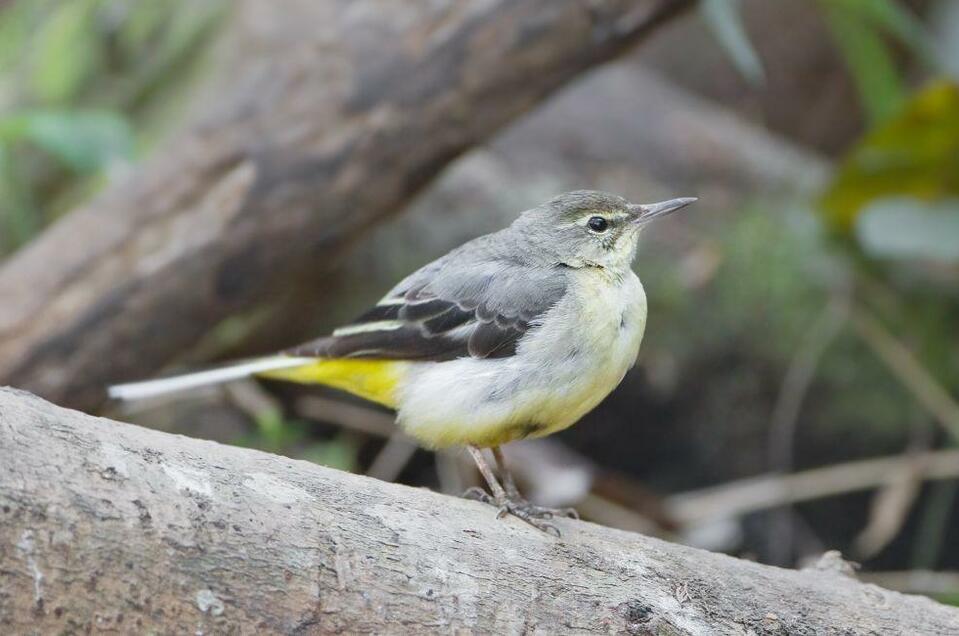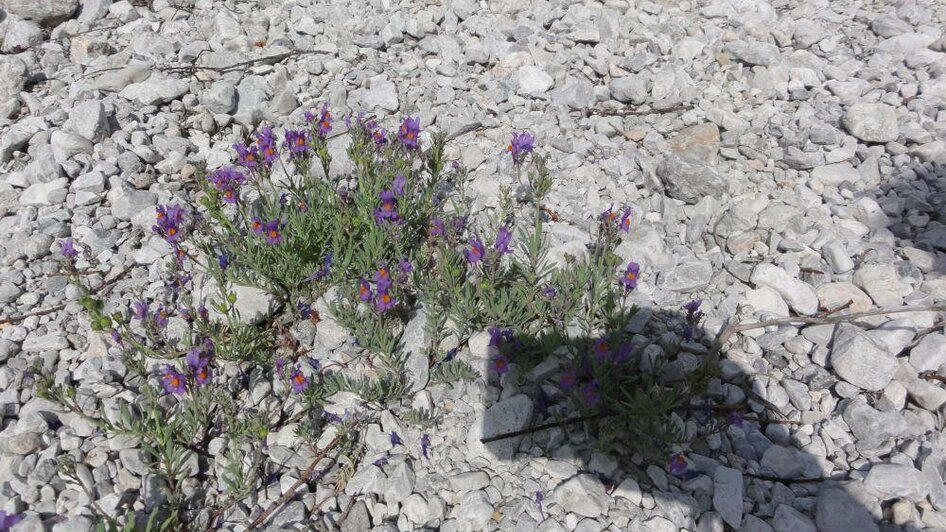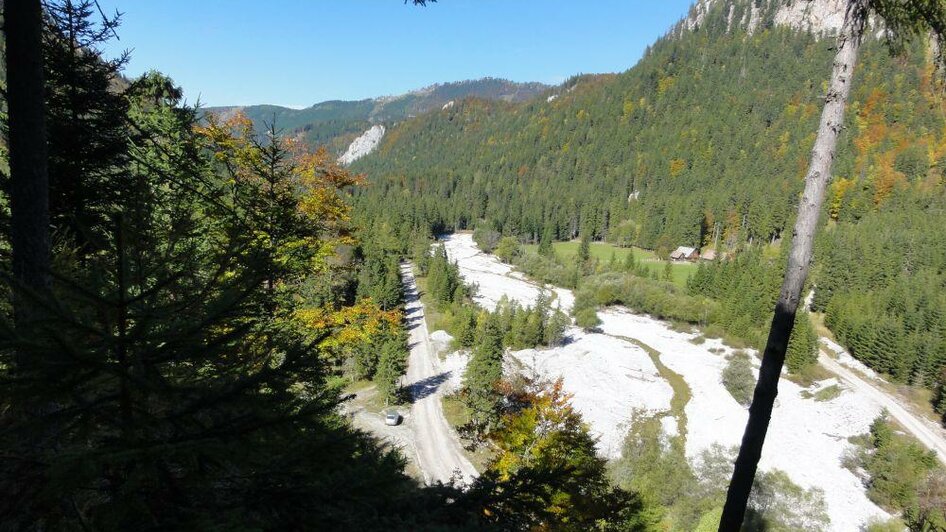Steinalpl
Neuberg an der MürzNatural jewels are special habitats in the cultural landscape, unique creations of nature and cultural-historical peculiarities.
In the 7 Styrian nature parks there are a total of 27 natural jewels. All these natural beauties are located along hiking trails, making them accessible on foot and free to visit. Of course, our nature and landscape guides are happy to accompany you and provide insights into the world of natural phenomena, the special flora and fauna that have found their habitats in these places.
Landscape Protection Area 21 –Veitsch-, Schnee-, Raxalpe
543636.9 E or 5287293.9 N
What3Words: ///rutschen.bestritten.geteilten
990 m
is the park and wood storage area 200 m after the Jausenstation Leitner in Neuwald immediately after the bridge over the Kalte Mürz.
The hiking trail follows the forest road for about 3 km to the east until Steinalp, before the valley narrows significantly after a bridge. From here we descend a few meters directly into the wide riverbed.
Caution: No entry during heavy rainfall and strong snowmelt – risk of flooding!
June to August
Easy
45 minutes (3 km)
The Steinalpl at the Kalte Mürz is the source river area of the Mürz, more specifically the Kalte Mürz, which merges with the Stille Mürz in the main valley to form the Mürz. The Kalte Mürz springs approximately five kilometers east of Neuwald, which is situated between Frein and the Lahnsattel, just east of the junction from the Mürz valley. The Kalte Mürz originates at the western slopes of the Eisenkogel (1513 m) and is fed in its first kilometers by numerous side streams that break through into the main valley of the Kalte Mürz through narrow rock gates – particularly noteworthy are those that flow in from the south, east of the Steinalpl. The Kalte Mürz is located in the northeastern limestone Alps, immediately northeast of the Schneealpe, surrounded by limestone mountains.
The Kalte Mürz is a mountain river, strongly sediment-laden due to its location in the limestone Alps, with the gravel (rock larger than 63 mm in diameter) consisting solely of porous limestone. The main habitat type present here is the Stretched type. This is characterized by large gravel areas, which can be described as gravel and sandbanks of the flowing waters with pioneer vegetation, traversed by a relatively straight river.
The water corresponds to condition class 2 (near-natural) according to Werth (1987): The watercourse has been point adjusted by human interventions – here by the construction of forest roads upstream with stone structures that alter the sediment dynamics, as well as in the area of the Steinalpl itself through excavations of the sediment after heavy rain events and subsequent deposition in the marginal areas. This means the river is artificially kept in a line and a branched course is prevented. However, further technical interventions such as bank reinforcements, weirs, and similar structures are absent.
The habitats of the type gravel and sandbanks of flowing waters with pioneer vegetation are only occasionally flooded and restructured due to their higher elevation above the mean water line, resulting in a very sparse vegetation coverage.
The following vascular plants are noteworthy here: Alpine Butterbur (Petasites paradoxus), Blue Moor Grass (Molinia caerulae), Limestone Bluegrass (Sesleria caerulea), Bitter Milkwort (Polygala amara), Nodding Wild Barley (Melica nutans), and annual Purple Willow (Salix purpurea), as well as so-called Alpine drift plants, which are washed down from the subalpine to alpine altitude and thrive in exceptionally low locations: The white-flowered Alpine Cress (Arabis alpina) – a cabbage family member – the striking violet-flowered Alpine Toadflax (Linaria alpina) with orange lower lips from the Figwort family, the Black-margined Daisy (Leucanthemum atratum), and Silverwort (Dryas actopetala).
Further at the edge, in an even higher location, a narrow willow floodplain adjoins. It features Purple Willow (Salix purpurea) and Silver Willow (S. alba) in the tree layer, alongside Norway Spruce (Pices abies) and Grey Alder (Alnus incana).
The herb layer is much more lush: Here, Blue Moor Grass (Molinia caerulae) and Alpine Butterbur (Petasites paradoxus), as well as Nettle Speedwell (Veronica urticifolia), Roundleaf Saxifrage (Saxifraga rotundifolia), Wood Angelica (Angelica sylvestris), Meadow Cowbane (Chaerophyllum hirsutum), Wood Sorrel (Oxalis acetosella), Musk Strawberry (Fragaria moschata), and Two-flowered Violet (Viola biflora) grow. The mosses provide a closed vegetation cover with over 50% coverage.
The gravel areas of the Kalte Mürz are very specific habitats. On one hand, because they are periodically destroyed and reformed by high waters, thus starting the colonization by specialized animal species anew each time, and on the other hand, because these riverbank habitats belong to those biotopes that have been most destroyed in the last 200 years. Therefore, the Steinalpl at the Kalte Mürz is a true, albeit small, river gem.
The gravel surfaces may look inhospitable, but they are home to those species that require open, sunny, and vegetation-poor bare soil habitats from gravel and sand. These are representatives of animal groups that, due to their small body size, typically only catch the eye upon closer inspection, more on that later.
Animal observations are easier with slightly larger species. Mountain and White Wagtails (Motacilla cinerea, M. alba) are typical representatives of the bird fauna in this area. The White Wagtail is generally more common and well-known to nature observers. It is characteristic of them to sit on an elevated rock and wag their tail. Their high, metallic call is distinctive.
Similar in behavior is the Mountain Wagtail. Its underparts and tail are very beautifully yellow, making it easy to distinguish from its sister species. The Mountain Wagtail lives near fast-flowing streams and hunts for insects there. Its long legs assist it in standing in the water to feed. Its very long tail is striking. Their nests are found in small cavities close to water, under bridges, between rocks, and in earth holes.
The Water Ouzel (Cinclus cinclus) is very elusive, a characteristic inhabitant of naturally remaining flowing waters. It is not related to the common Blackbird (Turdus merula) also found in the area. The Water Ouzel is relatively stocky and easily recognizable due to its short tail and striking white breast spot. The birds dive to depths of up to one meter, using sculling wing strokes to catch freshwater crustaceans and aquatic insects. They have the ability to prevent water from entering through the formation of nasal flaps, and they can also see well underwater with their eyes.
Another bird that thrives in the shrub and tree-lined bank habitats is the Wren (Troglodytes troglodytes). It is a very small bird, weighing only nine grams – yet its song is very strong. Usually, it is only seen and heard when it escapes through the thicket, low to the ground, chattering away. When entering the gravel areas, few animals are visible. However, various species of grasshoppers inhabit the gravel areas. The most common is the Brown Grasshopper (Chorthippus brunneus). It generally inhabits warm and sunny, sparsely vegetated sites – thus also the gravel areas at the Kalte Mürz. It is difficult to distinguish it from similar species based solely on appearance.
Here, the species-specific song of the grasshoppers comes into play. A short and distinct “Psrr” transitions into a duet song between two rival individuals, where each male chirps in the pauses of the other.
A peculiarity of the gravel areas is the Red-winged Bush-cricket (Psophus stridulus). It is perfectly camouflaged in the gravel. Only when it flies does it showcase its bright red hindwings, producing a loud buzzing of the wings.
Further smaller animal species live in the wet or even dry sand and gravel: Specialized spiders, ground beetles, short-winged beetles, ants, cicadas, and bugs.







